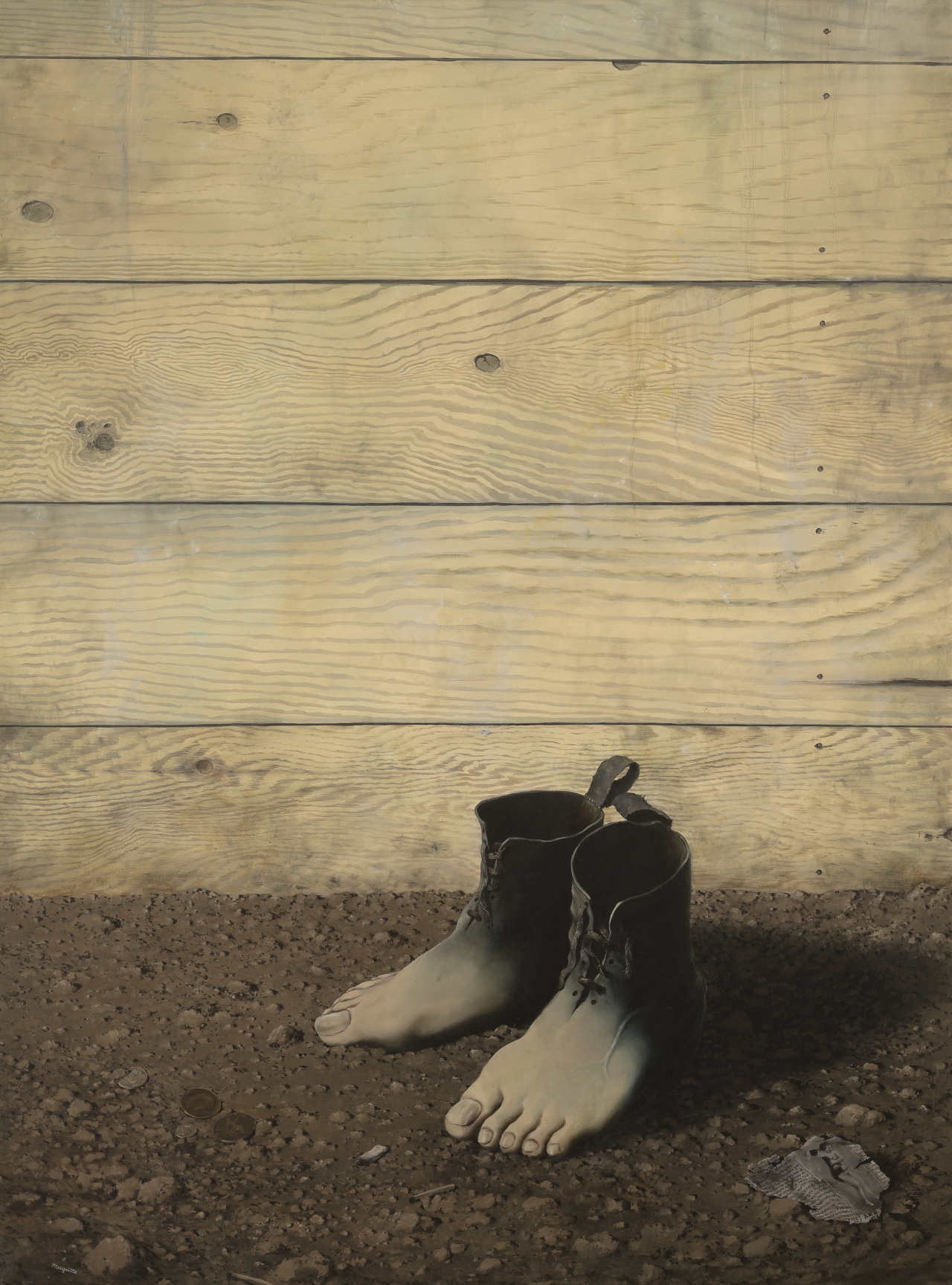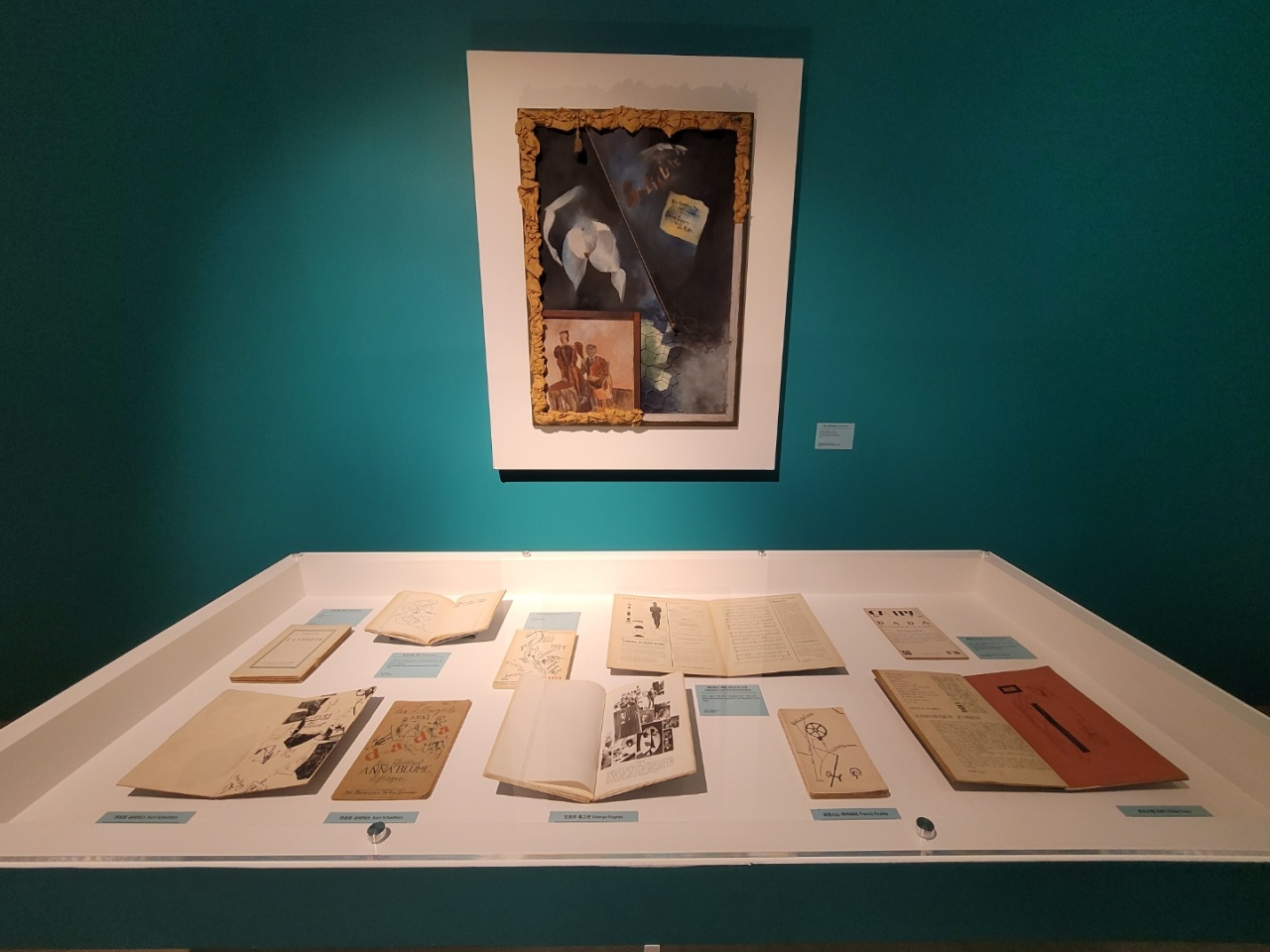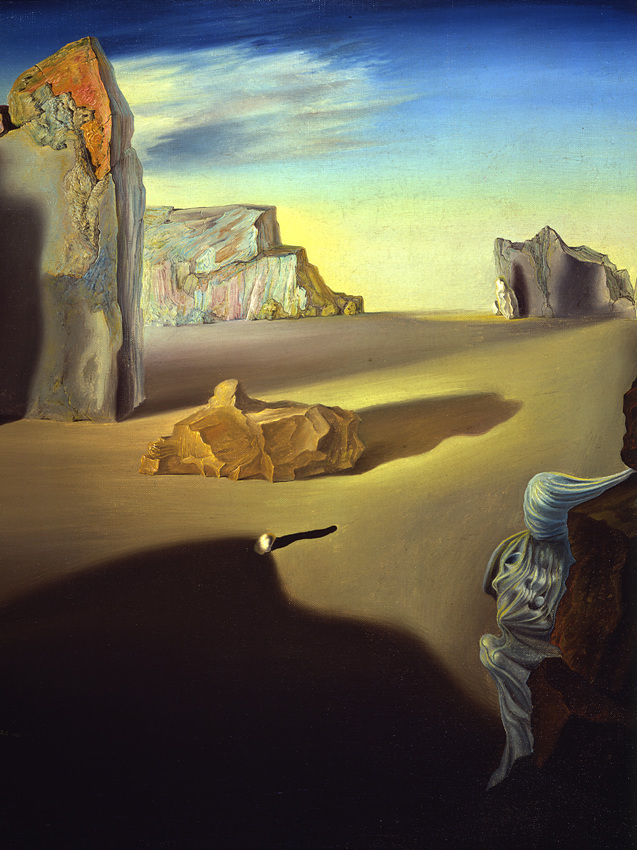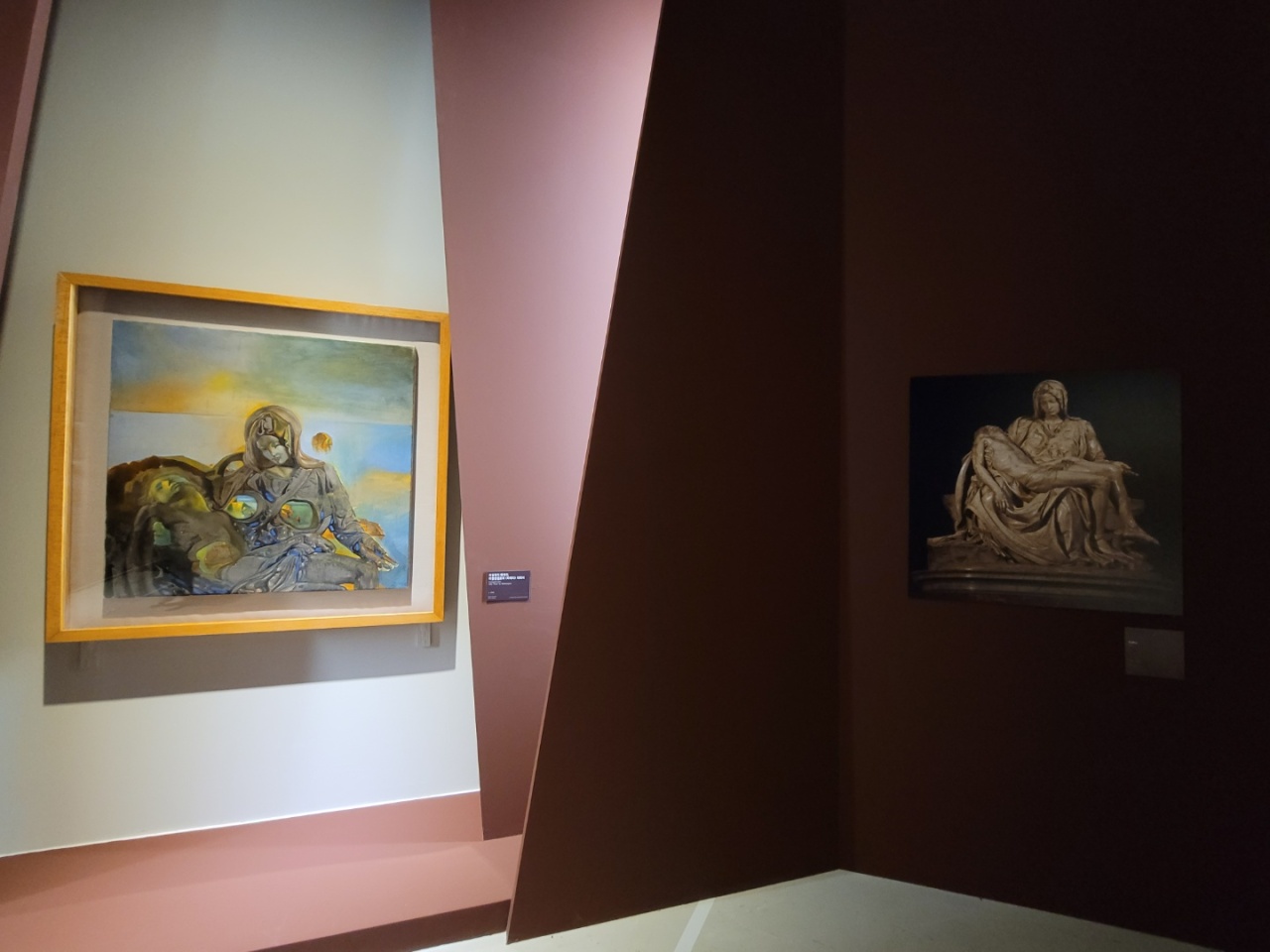In pursuit of new reality: Surrealism visits Seoul
European surrealism collections come to Seoul, inviting us to the era where artists sought after the unconscious world.
By Park YunaPublished : Jan. 8, 2022 - 16:00

After the first world war devastated Europe, killing millions of people, a number of artistic groups started to become suspicious of human reason, exploring the unconscious and dreams.
As the pandemic continues its own devastation, and the response raises its own questions about human judgment, exhibitions that touch on the century-old cultural movement and its artists have been brought into Seoul.
As an escape from the reality of war, artists started to turn their eyes to the unconscious tracing through dreams, desires and anxieties, losing faith in reason. Growing out of the dadaist movement that rejected conventional logic and aesthetics, surrealism started in Paris officially launched by manifesto written in 1924 by French author Andre Breton (1896-1966).
It began with literature and poetry but quickly started to spread to paintings, sculpture, performance and design, influencing artists such as Salvador Dali, Rene Magritte, Yves Tanguy, Man Ray, Joan Miro and Marcel Duchamp.
The two exhibitions -- “A Surreal Shock: Masterpieces from Museum Boijmans Van Beuningen” at Hangaram Arts Center Museum and “Salvador Dali: Imagination & Reality” at Dongdaemun Design Plaza – invite audiences to surrealism.
The show “A Surreal Shock: Masterpieces from Museum Boijmans Van Beuningen” at Hangaram Arts Center Museum offers a thorough knowledge about surrealism showcasing some 180 masterpieces from the collection of the Museum Boijmans Van Beuningen, a major Dutch museum that houses 150,000 objects from the Middle Ages to the present day.
As the pandemic continues its own devastation, and the response raises its own questions about human judgment, exhibitions that touch on the century-old cultural movement and its artists have been brought into Seoul.
As an escape from the reality of war, artists started to turn their eyes to the unconscious tracing through dreams, desires and anxieties, losing faith in reason. Growing out of the dadaist movement that rejected conventional logic and aesthetics, surrealism started in Paris officially launched by manifesto written in 1924 by French author Andre Breton (1896-1966).
It began with literature and poetry but quickly started to spread to paintings, sculpture, performance and design, influencing artists such as Salvador Dali, Rene Magritte, Yves Tanguy, Man Ray, Joan Miro and Marcel Duchamp.
The two exhibitions -- “A Surreal Shock: Masterpieces from Museum Boijmans Van Beuningen” at Hangaram Arts Center Museum and “Salvador Dali: Imagination & Reality” at Dongdaemun Design Plaza – invite audiences to surrealism.
The show “A Surreal Shock: Masterpieces from Museum Boijmans Van Beuningen” at Hangaram Arts Center Museum offers a thorough knowledge about surrealism showcasing some 180 masterpieces from the collection of the Museum Boijmans Van Beuningen, a major Dutch museum that houses 150,000 objects from the Middle Ages to the present day.

It includes archival materials such as the famous books, “Sigmund Freud, The Interpretation of Dreams,” written by Viennese psychoanalyst Sigmund Freud that inspired surrealist artists at the time, and “What is Surrealism?” written by Andre Breton. The cover of the book was painted by Rene Magritte.
The exhibition, which runs through March 6, starts with the first session “A Surrealist Revolution,” followed by “Dada and Surrealism,” “The Dreaming Mind,” “Chance and the Irrational,” “Desire,” and “Strangely Familiar.”
After Seoul, the exhibition will visit Mexico City and Italy, hopefully to Japan in the end, Susanna Koenig, project manager from the museum told The Korea Herald. The museum is planning to showcase another exhibition in Seoul in December that features impressionism at Hangaram Arts Center Museum. The museum is currently closed for renovation.
Salvador Dali’s first retrospective in Seoul
Another exhibition, “Salvador Dali: Imagination & Reality” at Dongdaemun Design Plaza, offers some 140 artworks by Dali, which were brought from the Gala-Salvador Foundation founded by the artist in Spain, Salvador Dali Museum in Florida, the US and Museo Nacional Centro de Arte Reina Sofia, Spain’s national museum of the 20th century art. It is the first time that the foundation has showcased some of its collection in Seoul.
The exhibition starts with the narrative about how Dali’s personality was influenced by the death of his older brother, who was also named Salvador and died nine months before Dali was born on May 11, 1904.
The exhibition, which runs through March 6, starts with the first session “A Surrealist Revolution,” followed by “Dada and Surrealism,” “The Dreaming Mind,” “Chance and the Irrational,” “Desire,” and “Strangely Familiar.”
After Seoul, the exhibition will visit Mexico City and Italy, hopefully to Japan in the end, Susanna Koenig, project manager from the museum told The Korea Herald. The museum is planning to showcase another exhibition in Seoul in December that features impressionism at Hangaram Arts Center Museum. The museum is currently closed for renovation.
Salvador Dali’s first retrospective in Seoul
Another exhibition, “Salvador Dali: Imagination & Reality” at Dongdaemun Design Plaza, offers some 140 artworks by Dali, which were brought from the Gala-Salvador Foundation founded by the artist in Spain, Salvador Dali Museum in Florida, the US and Museo Nacional Centro de Arte Reina Sofia, Spain’s national museum of the 20th century art. It is the first time that the foundation has showcased some of its collection in Seoul.
The exhibition starts with the narrative about how Dali’s personality was influenced by the death of his older brother, who was also named Salvador and died nine months before Dali was born on May 11, 1904.

Dali is known to have started to develop his eccentric behavior from his early years, to prove to his parents that he was different to his brother. This endeavor later sublimated into artistic potential that allowed him to become a leading surrealist artist who developed the paranoiac-critical method in surrealism.
“It was a good idea as an introduction to understand the character to talk about his brother and his childhood. Somehow the brain of geniuses reacts differently to that kind of burden,” Juan Manuel Sevillano, the foundation’s executive manager told The Korea Herald at the exhibition.
“(We) tried to create a retrospective that really can be a high standard overview of Dali for the Korean public because it is our first time we are here. It’s a wonderful exhibition. One of the very best ones,” he added.
“It was a good idea as an introduction to understand the character to talk about his brother and his childhood. Somehow the brain of geniuses reacts differently to that kind of burden,” Juan Manuel Sevillano, the foundation’s executive manager told The Korea Herald at the exhibition.
“(We) tried to create a retrospective that really can be a high standard overview of Dali for the Korean public because it is our first time we are here. It’s a wonderful exhibition. One of the very best ones,” he added.

The exhibition includes Dali’s early paintings such as “Self-portrait in the Studio” created in 1919 before he explored surrealism. It also reveals little known aspects of the artist, such as how he was inspired by masters from the classical period and reinterpreted the masterpieces in his own way. Such paintings include “Geological Echo, After ‘Pieta’” and “The Warrior or ‘Los Embozados.’ Lorenzo de’ Medici after the Tomb of Lorenzo de’ Medici by Michelangelo.”









![[Kim Seong-kon] Democracy and the future of South Korea](http://res.heraldm.com/phpwas/restmb_idxmake.php?idx=644&simg=/content/image/2024/04/16/20240416050802_0.jpg&u=)








![[KH Explains] Hyundai's full hybrid edge to pay off amid slow transition to pure EVs](http://res.heraldm.com/phpwas/restmb_idxmake.php?idx=652&simg=/content/image/2024/04/18/20240418050645_0.jpg&u=20240418181020)

![[Today’s K-pop] Zico drops snippet of collaboration with Jennie](http://res.heraldm.com/phpwas/restmb_idxmake.php?idx=642&simg=/content/image/2024/04/18/20240418050702_0.jpg&u=)